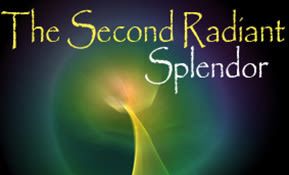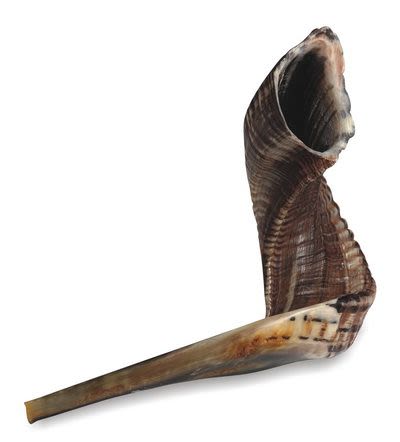
Adam Kadmon – Primordial Adam
The entirety of all that exists is called Adam Kadmon ("Primordial Adam"). All of the worlds above and below are...

Opening 12
Everything that exists and the way everything is governed is all a single order arranged in the underlying likeness of Adam. Adam Kadmon (“Primordial Adam”) encompasses everything.
The entire government of the universe in all its cycles until its completion, and so too, the totality of all that exists, is all one single order instituted by the Emanator, blessed be His Name, with one goal: to bestow goodness to the utmost degree of perfection. All of the various different creatures and the laws through which they are governed are necessary for the fulfillment of His plan. Underlying the entire order is the archetypal likeness of Adam (D’Adam) with his full sum of limbs. All are linked together in a single system, exactly as they are in man. Accordingly, Adam Kadmon, which is the totality of everything, is the totality of this order formed in this likeness. It follows that the Emanator, blessed be His Name, brought into being a single existence: the Order of the Likeness of Adam. The totality of everything that exists, including all of the various creatures and the order by which everything is governed, is bound up with this underlying perfect likeness.
The proposition has two parts: Part 1: The entire government of the universe… This tells us that the entire government of the universe and all that exists constitutes a single order. Part 2: Underlying the entire order is the archetypal likeness of Adam… This tells us that the entire order takes the form of the archetypal likeness of Adam.
Part 1: The entire government of the universe in all its cycles until its completion… This means everything that has happened and everything that is destined to happen in the future until the very end of the universe… and so too, the totality of all that exists… This includes all of the lights above (the Sefirot) and all the created realms and beings below (the worlds and their inhabitants), including their substance, their form and qualities… is a single order. This means that you should not think – because you see so many creatures of so many different kinds, this one serving one function, that one serving a different function – that they do not all enter under a single system like branches emerging from a single root. For a mere random multiplicity lacking any order or unity of purpose in its constituent parts is not praiseworthy.
Consider the case of a person who possesses a variety of different skills. He may know how to do metalwork and painting and how to make music. We might say that the reason why he does all these different things is because this is what he knows, and if he knew more, he would do more. We are not obliged to find any connection between one field of expertise and another, or between different examples of the person’s work in various spheres. What he knew, he did.
But the Holy One, blessed be He, has made so many creatures. Should we therefore say that he made just as many creatures as the number of great skills He possesses, like the man who knows how to do metalwork, paint and make music, and who does each of the things he does because he possesses the requisite expertise? The immediate objection can be raised: “Have you then exhausted all the praises of your Master?” (Brachot 33b) Does He possess no other knowledge except that exhibited by the work we see? Why did He make just so many and no more? Why did He not make just make one thing?
We must understand that it is not so: the various different things we see in the world are not totally separate, unconnected items created for all kinds of different reasons. There is one single reason for everything: everything is part of a single order that is made up of many particulars – these being its various branches. There are just as many branches as there are creatures. You cannot ask: “Why aren’t there anymore?” For in order to accomplish the goal intended by the Supreme Mind, it was necessary to have precisely this number of different creatures.
This single order was …instituted by the Emanator, blessed be His Name, with one goal: to bestow goodness to the utmost degree of perfection. This defines the purpose of everything. It is a complete order the purpose of which is to bestow perfect goodness. We must understand that all of these different parts of the creation are necessary in order for it to be complete, in order to attain the goal of bestowing goodness to the ultimate degree of perfection.
All of the various different creatures and the laws through which they are governed are necessary for the fulfillment of His plan. As we have explained earlier: the actual creatures themselves contain within them allusions to different aspects of the overall system of government, and are built accordingly in all their laws and details. Everything that happens in the world is part of the overall government. All the different creatures and everything that happens to them makes it evident that everything is part of a single system of government and a single order whose purpose is the bestowal of perfect good. Each and every creature is needed, for each of them points to a particular aspect of the overall system of government.
Part 2: Underlying the entire order is the archetypal likeness of Adam (D’mut Adam)… Of the archetypal likeness of Adam it is written: “Let us make Adam in our image, after our likeness” (Genesis 1:26). We see that this likeness includes and encompasses all the powers of holiness.
…with his full sum of limbs… Just as each individual Partzuf divides into 613 lights, these being its 613 limbs and interconnecting channels, so too the totality of existence is made up of 613 limbs and channels, all of which constitute a single overall likeness. For even though each of the different worlds is considered to be a world in itself, they are all only limbs of this overall likeness. The interconnections and interrelationships between the different worlds are the interconnections and interrelationships between the constituent limbs of this single order. Thus: All are linked together in a single system, exactly as they are in man. The meaning of this should be clear in the light of what we have said above.
And therefore, Adam Kadmon, which is the totality of everything, is the totality of this order formed in this likeness. We will see clearly below (Opening 31) that the entirety of all that exists is called Adam Kadmon (“Primordial Adam”). All of the worlds above and below are considered to be only parts of this, like branches emerging from the root. Everything in its entirety is this Adam Kadmon, and as discussed later, “The Ten Sefirot of Adam Kadmon fill the entire void”, as will be explained in due course with the help of heaven.
It follows that the Emanator, blessed be His Name, brought into being a single existence: The greatness of the Supreme Wisdom lies in the fact that He did not create a multiplicity of different things with no common direction, but rather, a single existence. This single existence so great in every respect that when we examine its particulars, we find all the different details that we see now. Accordingly we say that this entire existence takes the form of a single man or Adam, and that all these parts that exist now constitute the limbs of this Adam. Accordingly, this single existence is called: the Order of the Likeness of Adam. Anything we wish to understand with respect to any of the existent beings we see, we will understand in relation to this underlying Order of the Likeness of Adam.
The totality of everything that exists, including all of the various creatures and the order by which everything is governed, is bound up with this underlying perfect likeness. As explained earlier, the perfection of the order that He brought into being required all these different creatures and the order through which they are governed.
To purchase The 138 Openings of Wisdom, click here. Rabbi Avraham Greenbaum is the director of Azamra (http://www.azamra.org/).













Tell us what you think!
Thank you for your comment!
It will be published after approval by the Editor.